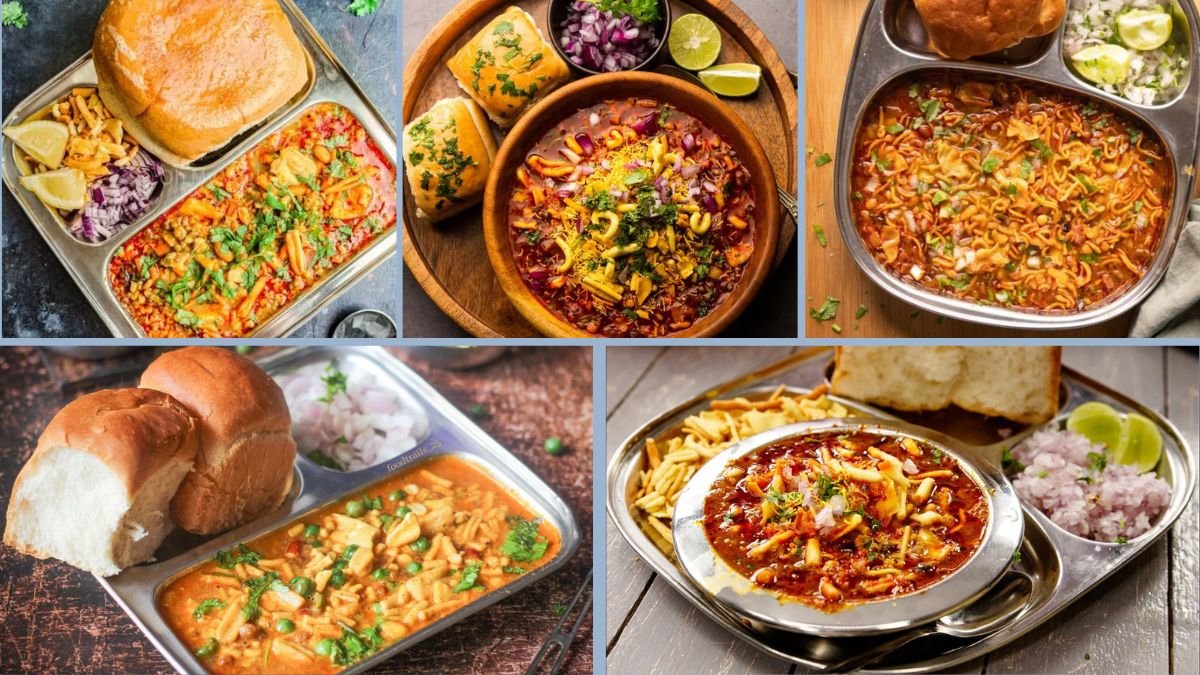Misal Pav, a traditional Maharashtrian street food, combines a spicy curry of sprouts (misal) with soft bread rolls (pav). Renowned for its bold flavors, nutritional richness, and cultural roots, Misal Pav stands as both a comfort food and a balanced meal. This article presents a structured, seven-step method for preparing an authentic, vegetarian Misal Pav with sprouts, while minimizing excess oil and maximizing flavor.
Introduction
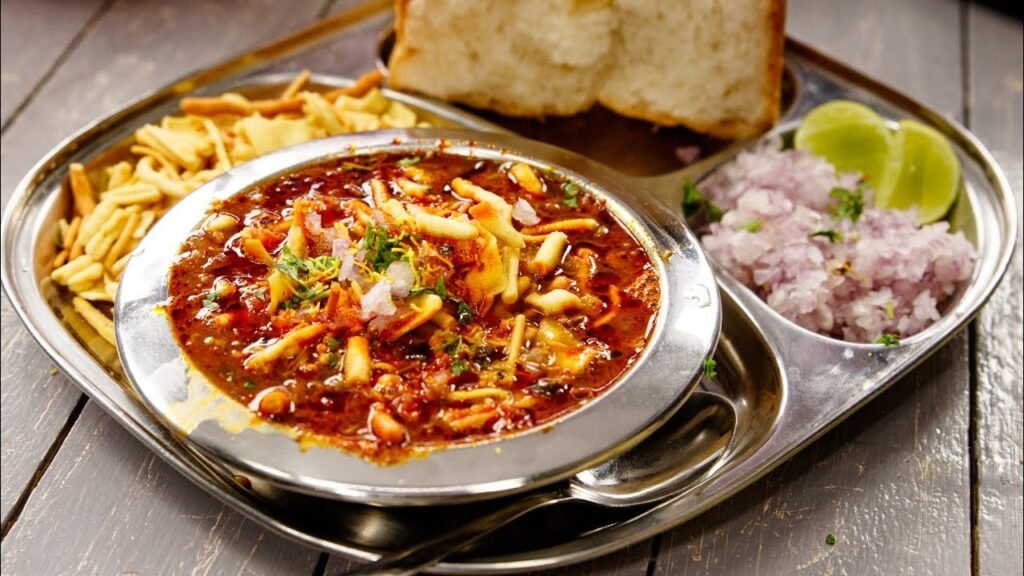
Maharashtra’s culinary heritage is incomplete without Misal Pav. The dish consists of misal—a spicy, tangy, and flavorful curry made with sprouted legumes (commonly moth beans, matki)—and pav, fluffy bread rolls served alongside. The dish is topped with crunchy farsan, chopped onions, fresh coriander, and a squeeze of lemon, creating layers of taste and texture.
Unlike meat-based curries, Misal Pav relies entirely on vegetarian protein from sprouts, making it a nutrient-dense meal. The sprouts provide fiber, protein, and micronutrients, while the curry base contributes antioxidants from spices. When prepared thoughtfully, it balances taste, nutrition, and cultural authenticity.
This paper proposes a 7-step structured recipe for Spicy Misal Pav with sprouts, emphasizing vegetarian-only methods.
Step 1: Selecting & Preparing Sprouts
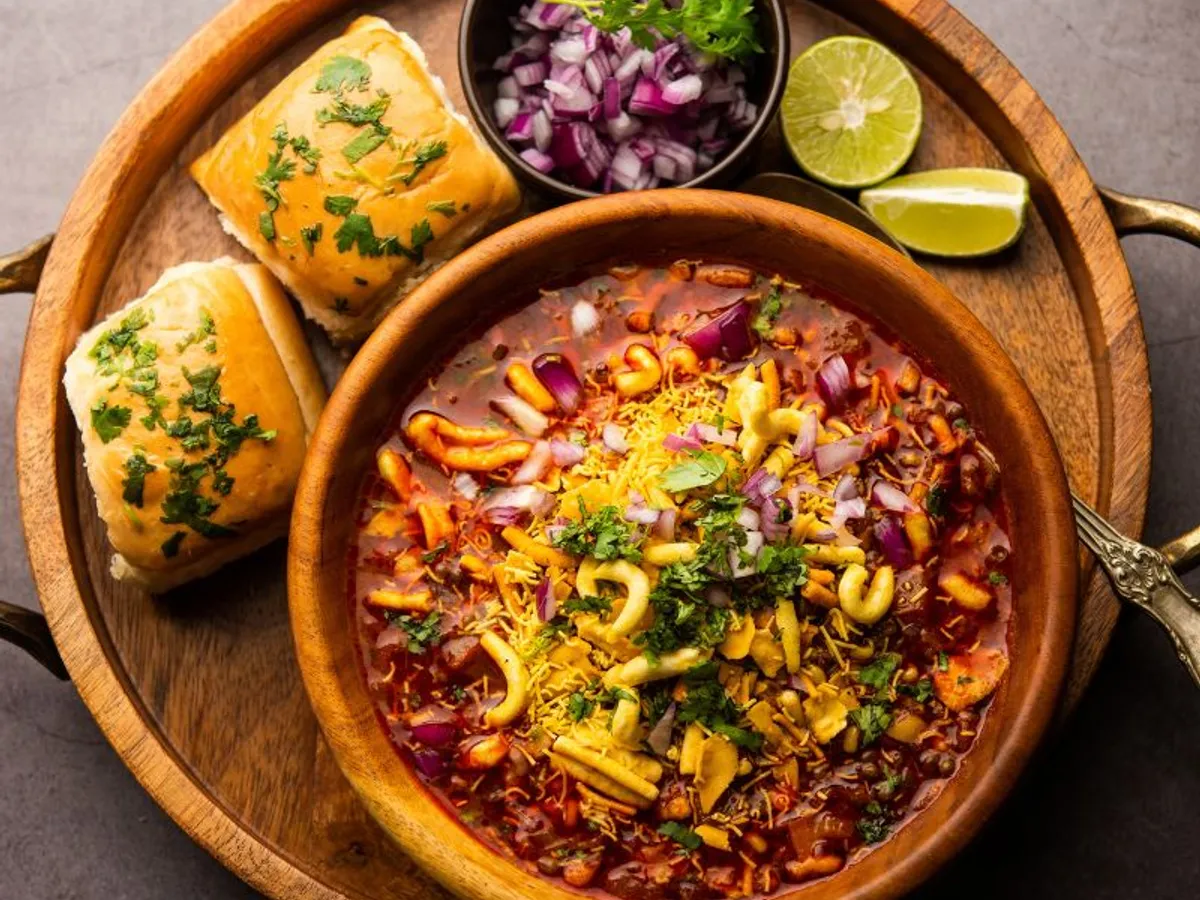
1a. Choice of Sprouts
Traditionally, moth beans (matki) are the star ingredient. However, green moong sprouts, black chana sprouts, or a combination can also be used for variety. Each type of sprout brings unique nutrition:
- Matki (moth beans): rich in protein, iron, folate.
- Moong sprouts: high in fiber, easier to digest.
- Black chana sprouts: provide slow-release energy and a nutty flavor.
1b. Sprouting Process
- Wash beans thoroughly and soak for 8–10 hours.
- Drain water, wrap beans in a damp muslin cloth, and keep in a warm, dark place for 12–18 hours.
- Sprouts develop naturally and are ready when they are 1–2 cm long.
Sprouting enhances nutritional value, improves digestibility, and introduces a fresh crunch to the curry.
Step 2: Preparing the Spice Base
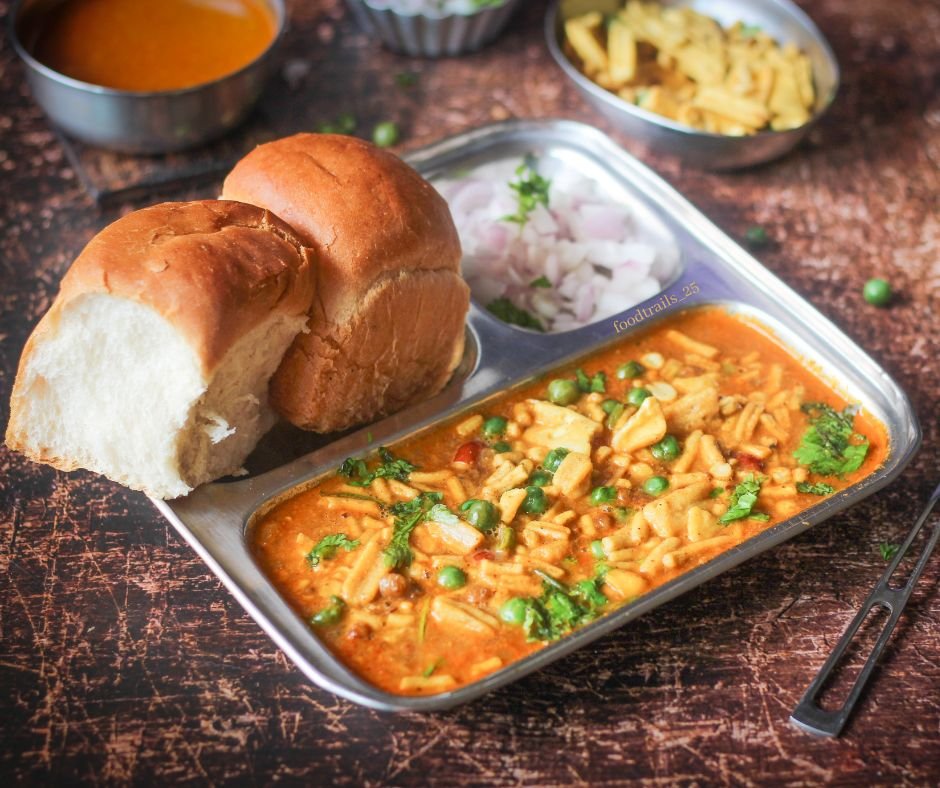
The heart of Misal lies in its spice blend, which provides depth and heat.
2a. Dry Spices
- Coriander seeds (2 tbsp) – earthy base.
- Cumin seeds (1 tsp) – adds warmth.
- Fennel seeds (½ tsp) – subtle sweetness.
- Dried red chilies (3–4) – pungency and color.
- Cloves, cinnamon, cardamom (small pinch each) – aromatic balance.
2b. Wet Masala
- Onions (2 medium) – sautéed until golden.
- Ginger-garlic paste (1 tbsp) – base pungency.
- Tomatoes (2 medium) – tanginess and body.
- Fresh coconut (2 tbsp grated) – creaminess and richness.
Roast dry spices until fragrant, then grind with onions, tomatoes, ginger-garlic, and coconut to make a thick, smooth paste. This masala forms the backbone of the Misal gravy.
Step 3: Making the Tarri (Spiced Curry Gravy)
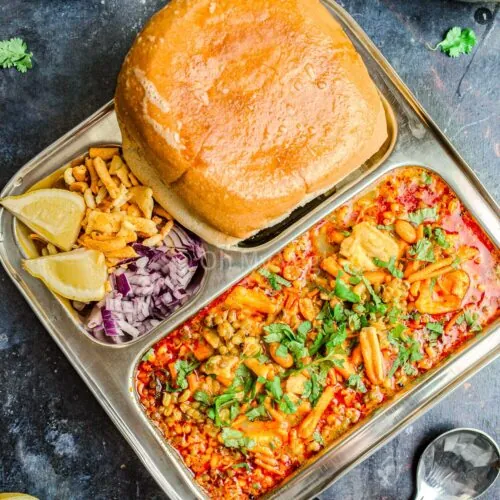
The tarri is a spicy, oil-layered curry poured over the sprouts.
- Heat 2–3 tbsp oil in a kadhai (use less oil than street-style, but enough to bloom spices).
- Add mustard seeds, curry leaves, and a pinch of asafoetida (hing).
- Add the ground masala and sauté until the oil begins to separate.
- Mix in turmeric (½ tsp), red chili powder (1 tsp), and goda masala (2 tsp) or garam masala.
- Add cooked sprouts (from Step 1) along with water (2–3 cups).
- Simmer for 15–20 minutes to allow flavors to develop.
The resulting tarri is bright red, spicy, and aromatic—yet controlled in oiliness compared to commercial versions.
Step 4: Preparing the Sprout Curry (Misal)
The sprout curry forms the base layer of the dish.
- Pressure cook sprouts with a pinch of turmeric and salt for 2–3 whistles until just tender.
- Add the sprouts into the tarri base.
- Adjust consistency: misal should be semi-liquid, neither too watery nor too thick.
This step ensures sprouts absorb spices fully, enhancing both taste and nutrition.
Step 5: Assembling the Toppings
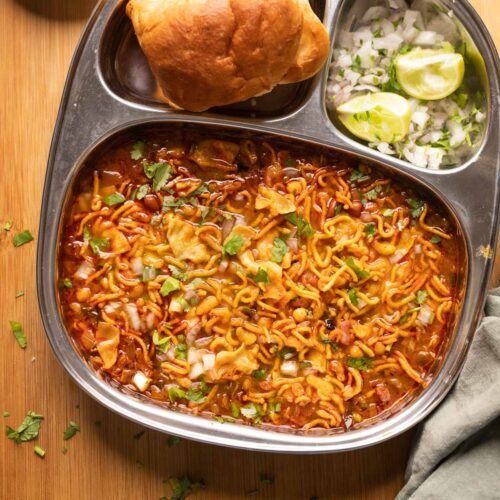
A signature feature of Misal Pav is its multi-layered toppings. Each contributes contrast in texture and flavor:
- Farsan (sev or chivda): adds crunch and savory depth.
- Chopped onions: freshness and sharpness.
- Fresh coriander leaves: herbal aroma.
- Lemon wedges: bright acidity to balance spice.
- Optional extras: diced tomatoes, grated carrot, or thinly sliced cucumber for a healthier twist.
Toppings should be added just before serving to retain crispness and freshness.
Step 6: Preparing the Pav
The pav is as crucial as the misal itself.
6a. Selecting Pav
Choose soft, airy dinner rolls or traditional ladi pav. Pav should be fresh, slightly chewy, and light.
6b. Toasting Pav
- Heat a flat griddle (tawa).
- Apply a thin layer of butter or ghee (optional for flavor).
- Toast pav until golden on both sides.
This step elevates the eating experience, providing a toasty balance to the fiery misal.
Step 7: Serving & Presentation
Misal Pav is best served piping hot in a layered fashion:
- Place a portion of sprout curry (misal) in a deep bowl.
- Pour a ladle of spicy tarri over it.
- Add farsan, onions, and coriander on top.
- Place toasted pav on the side.
- Serve with lemon wedges and optional accompaniments like buttermilk or curd to balance the heat.
The layered presentation—base curry, fiery tarri, crisp toppings, and soft pav—makes Misal Pav visually striking and texturally complex.
Nutritional Value & Health Benefits
- Sprouts: High in protein, dietary fiber, and vitamins. Sprouting increases bioavailability of minerals.
- Spices: Turmeric (anti-inflammatory), chili (metabolism booster), garlic (antioxidant).
- Low-oil preparation: Reduces calorie density compared to restaurant versions.
- Balanced meal: Carbohydrates from pav, protein from sprouts, micronutrients from vegetables and spices.
This makes Misal Pav both indulgent and wholesome, when cooked with mindful oil usage.
Common Mistakes & How to Avoid Them
| Mistake | Result | Correction |
|---|---|---|
| Overcooking sprouts | Mushy texture, loss of nutrients | Pressure cook only 2–3 whistles |
| Excess oil in tarri | Greasy, heavy dish | Use minimal oil; rely on spice roasting for flavor |
| Skipping toppings | Flat, unbalanced dish | Add onions, farsan, lemon for contrast |
| Pav not toasted | Soggy, bland bread | Always lightly toast before serving |
Conclusion
Misal Pav is more than a dish—it is a cultural icon. By following this 7-step structured recipe, one can achieve an authentic, spicy, and nutritious Misal Pav with sprouts that remains vegetarian and health-conscious. From sprouting beans to layering toppings and serving with pav, every step contributes to the harmony of flavor and nutrition.
Prepared this way, Misal Pav retains its fiery character while offering a balanced, oil-controlled, and wholesome version fit for both home kitchens and academic exploration.
